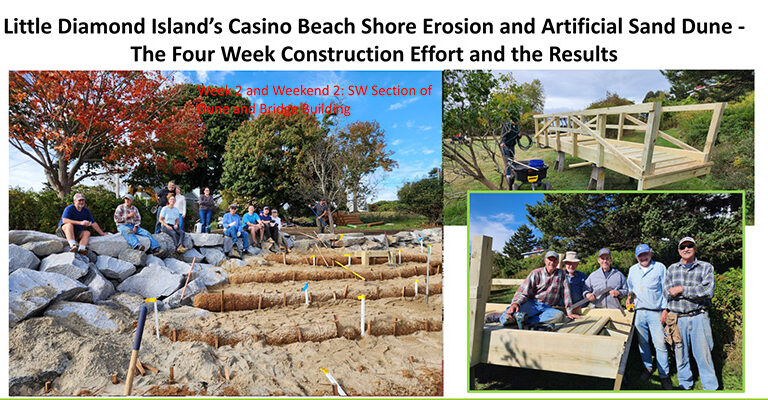It was a sad, maybe even pathetic sight, but it caught my eye.
I was driving through the busy commercial strip on Route 3, just west of Route 1 in Belfast, and I saw an excavator, its arm resting in a partially demolished building. It took me a moment, but I recognized the building as the former Pizza Hut.
It was the favorite meeting spot for the former pastor of a church we used to attend. I had many a lunch with him there.
Before coming to Maine, he had lived in suburban Colorado. I thought it odd, given the several nice downtown eateries in Belfast, that he would choose this sort of soulless chain place, but that was what he was used to.
That the building was being demolished, maybe 20 years after it was built, speaks to a problem in our planning and development philosophies.
It’s ugly and confusing for drivers, and, as seen with the Pizza Hut, represents disposable development.
A few years ago, I attended a conference hosted by the Community Heart & Soul organization, which describes itself as “resident-driven” in engaging a town’s population in identifying what is most loved about the community, “what future they want for it, and how to achieve it.” The organization has worked with 120 towns across the country, including in Biddeford and Bucksport.
The keynote speaker at the conference, a nationally known advocate of sensible development, showed an old photo of his hometown in Minnesota. The main street looked much like a street in Portland’s Old Port—brick buildings all the same distance from the street, arched windows, wide sidewalks.
The next photo was contemporary and from around the corner of that town—fast-food chains and big-box stores strewn along unwalkable streets, large signs, and a plethora of curb cuts.
The speaker argued that these buildings would likely devolve into dollar stores and, eventually, become meth labs. Then the community would have to apply for grants to demolish and clean up the area.
The commercial strip in Belfast, and the Pizza Hut’s demolition, reminded me of some related history.
There had been a family-owned lumber yard in the area, which is now run by the Hammond Lumber chain. But after sewer and water lines were extended there, several other businesses opened along Route 3. They include a large gas station, Goodwill store, chain medical facility, bank, and a few restaurants—all scattered at differing distances from the road, with maze-like access to parking.
It’s ugly and confusing for drivers, and, as seen with the Pizza Hut, represents disposable development.
In 1990, Belfast elected a young, progressive city council, and one of its initiatives was developing zoning for the Route 3 strip, soon to get that water and sewer. A consultant presented images from other towns which did better planning for commercial strips. Instead of multiple curb cuts and signs, one drive intersected perpendicularly with the highway and one marquee sign listed the businesses within.
The benefits should be obvious. With one entrance serving maybe eight stores, driving along the highway is faster and safer. Vegetation along the road can screen the buildings. The sewer and water lines can be shared along the access road.
Parking between stores can be shared.
But in 1992, in part in reaction to those progressive planning ideas, Belfast elected a conservative city council which eliminated the zoning for Route 3. So instead, today we have a chaotic, inefficient, cluster of commerce and traffic.
I’ll confess to taking a perverse pleasure in watching the demise of malls, like the one in Bangor. A now-departed wise guy I knew had a joke about how these developments can eclipse community: “Welcome to the mall… home of Bangor.”
One takeaway from the conference referenced earlier was that, as much as we may regret these poorly conceived commercial districts, it’s not likely that we can wipe them away. Instead, the keynote speaker asserted, communities should invest in downtown, street-facing commercial strips.
So maybe improving sidewalks, installing benches and attractive, down-faced lighting, and perhaps planters could help those businesses thrive. And one more point—those older brick buildings lining our coastal downtowns generate far more economic activity than do the cheaply built chain stores.
Tom Groening is editor of The Working Waterfront. He may be contacted at tgroening@islandinstitute.org.





